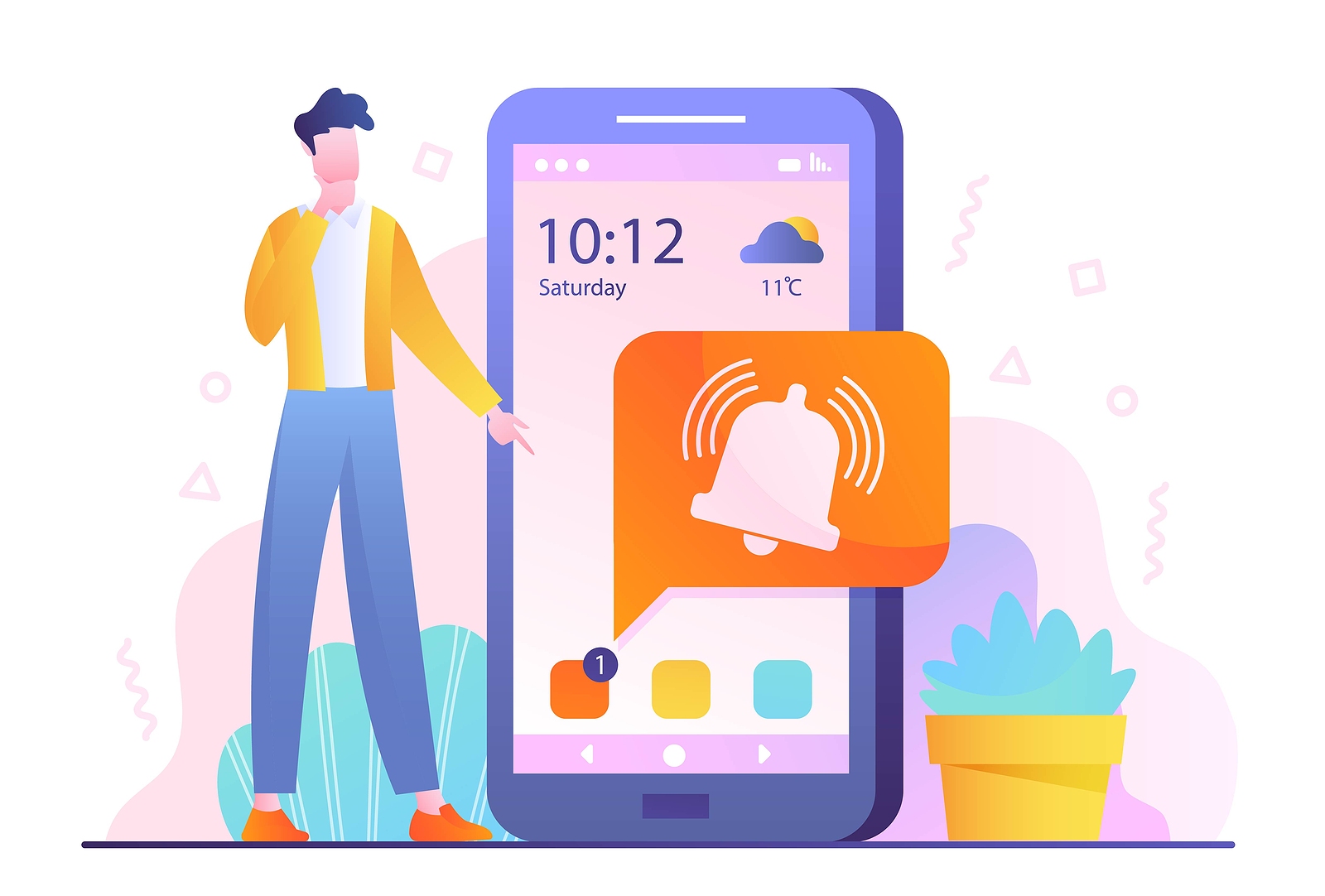Push notifications might seem annoying for some, but for others, particularly business owners, they’re actually an incredibly beneficial feature to have. Provided the push notifications you’re sending your customers are relevant and frequently delivered, you’ll soon be repairing the benefits. According the research, customers admitted that they were more likely to use an app when a push notification was delivered if they’re based on the following things:
- Their individual preferences
- Their location
- Real world actions
- In-app behaviour
In addition to the aforementioned things, customers also liked it when companies made their push notifications more personable, calling the customer by their name, for example, or wishing them a happy birthday or a merry Christmas. When executed right, push notifications go from being a nuisance on our smart devices to useful tools that encourage people to buy our products or commit to our services. So how else can your business benefit from enabling push notifications? Let’s take a look:
1. It can increase engagement
Provided that your push notifications are inclusive of everything we’ve just spoken about, such as the individual preferences of a customer, where they’re based and what they like to do in the app, for instance, you’ll see an increase in overall engagement within your app. You might also see a drive in traffic towards your main website.
As the engagement increases, the more likely it is that you’ll produce new leads and generate increased sales as a result. Also, make sure you’re pushing notifications about certain items that particular customer has looked at. If, for example, the item they were looking at is now in the sale, notify them that it has been discounted in an attempt to reel them back in and for them to, eventually, make a purchase through you. If you don’t make them aware of the discount through push notifications, you’ll likely not see that lead turn into a sale.
2. It improves customer retention
If you continue to target your push notifications, specifically, to each customer, you’ll automatically see an increase in customer retention data. This is because they know that you’ll send them targeted push notifications that they’ll actually want to know about. Where they could just turn those notifications off if it was annoying them, they’re unlikely to make a purchase with you again because they’ve simply forgotten that you exist.
By delivering consistent push notifications, you’ll be reminding them that you’re there if they need anything, and that what they likely do need, you have available. Couple this with personalised micro-copy and a discount here and there and you’ve got the recipe for a happy, loyal customer.
3. It can higher conversion rates
We’ve already touched on this in the last few points, but it deserves to be a benefit all on its own. Conversion rates will become higher and remain at impressive heights with relevant push notifications. A conversion is essentially the move from a prospective customer to an actual customer, converting from a lead to a sale. If you remain persistent with your push notifications, whilst ensuring they’re relevant to your customers, you’ll soon see your conversion rates increase.

4. It allows for audience segmentation
You cannot enable push notifications until you’ve uncovered data and information about your individual customers, no matter how many you have. You will need to find out their preferences in order to make your push notifications personable, such as including their names or plugging discounts and sales including the items they’ve been viewing recently.
Segmentation will allow you to adjust the content of your message whilst still sending relevant and specific notifications to different target groups. This means that you won’t have to lift a finger in order to make sure your customers are receiving personalised, targeted push notifications that they’ll find valuable and worthwhile pursuing.
5. It results in greater customer care & service
Personalisation, especially, is one way of making your customers feel listened to and valued. Whether they appear via your app, in an email or via SMS, there are numerous methods whereby you can get in touch with your customers using push notifications. Vice-a-versa, however, your customers should be able to get in touch with you to provide you with feedback or to ask questions.
This is why you’ll find that most companies will send a follow up email after a purchase has been made to get some customer feedback. You could send a push notification asking the customer to rate their experience or to tell you what they thought of the product they’ve bought. It would also be worthwhile letting the customer know that you’re there whilst they wait for their order to come, for instance.
For example, they could have purchased something that’s coming in the post, but in the meantime, you could send them a push notification that reads ‘Have any questions about your order? Contact us on [phone number] for help’. This lets the customer know that you’re there to answer their queries should something not go as planned. No matter what you use your push notifications for, and regardless of the format you choose to send them in, a push notification here and there will help to provide a better user experience for your customers.
Kumo has over two decades of experience in the digital marketing industry, providing clients throughout the UK with sterling marketing services, including, but not limited to, SEO, PPC, content writing and website design. If you’re looking to put your business on the map, get in touch with a member of our friendly, professional team today – we’re always pleased to hear from you.
Author Biography
Lorna
As an experienced Copywriter, Lorna enjoys creating varied content for an abundance of different industries and sectors. From detailed, informative articles to creative infographics, she's always looking to inject originality into the work she produces. When she isn't working, Lorna runs her own lifestyle blog, plays the guitar and loves to take part in charity runs.